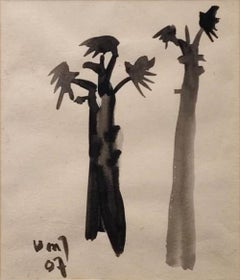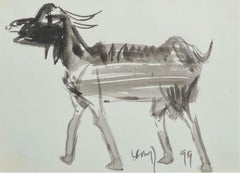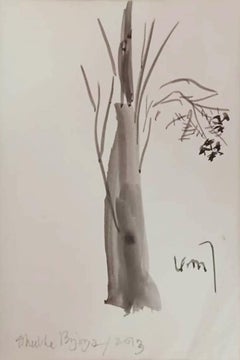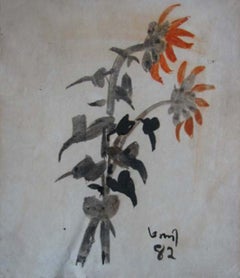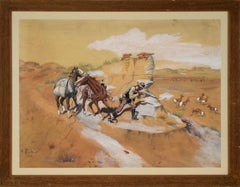K.G. Subramanyan More Art
K.G. Subramanyan was born in Kerala. He completed his Bachelor’s Degree in Economics from the Presidency College in Chennai. In 1948, he graduated from Kala Bhavan in Santiniketan, where he studied under the tutelage of Benode Behari Mukherjee, Nandalal Bose and Ramkinkar Baij. In 1955, he received a British Council Research Fellowship to the Slade School of Art at the University of London. He was an inspiration to generations of students as a member of the Baroda M S Fine Arts Faculty. His focus there in later years was on terracotta and pottery.
Early 2000s Modern K.G. Subramanyan More Art
Paper, Watercolor
1990s Modern K.G. Subramanyan More Art
Paper, Watercolor
2010s Modern K.G. Subramanyan More Art
Paper, Watercolor
1980s Modern K.G. Subramanyan More Art
Paper, Watercolor
1920s Other Art Style K.G. Subramanyan More Art
Watercolor, Laid Paper
1960s American Modern K.G. Subramanyan More Art
Paper, Watercolor, Gouache
1950s Modern K.G. Subramanyan More Art
Watercolor, Gouache, Archival Paper
1950s Modern K.G. Subramanyan More Art
Canvas, Oil
Charles LevierCharles Levier [Solitude de Pierrot] signed large oil on canvas circa 1950, circa 1950
1970s Modern K.G. Subramanyan More Art
Archival Ink, Archival Paper, Watercolor
2010s Contemporary K.G. Subramanyan More Art
Paper, Pastel, Gouache
Early 20th Century Naturalistic K.G. Subramanyan More Art
Watercolor
2010s Modern K.G. Subramanyan More Art
Paper, Watercolor, Graphite
1930s American Modern K.G. Subramanyan More Art
Paper, Gouache
Harry GottliebGlassblowers WPA American Scene Mid- 20th Century Modern Figurative Workers 1932, 1932
Mid-20th Century Modern K.G. Subramanyan More Art
Gouache
1970s Modern K.G. Subramanyan More Art
Canvas, Gouache
Mid-20th Century Modern K.G. Subramanyan More Art
Canvas, Oil
